Cooper is dead. Bold analysis of INTERSTELLAR
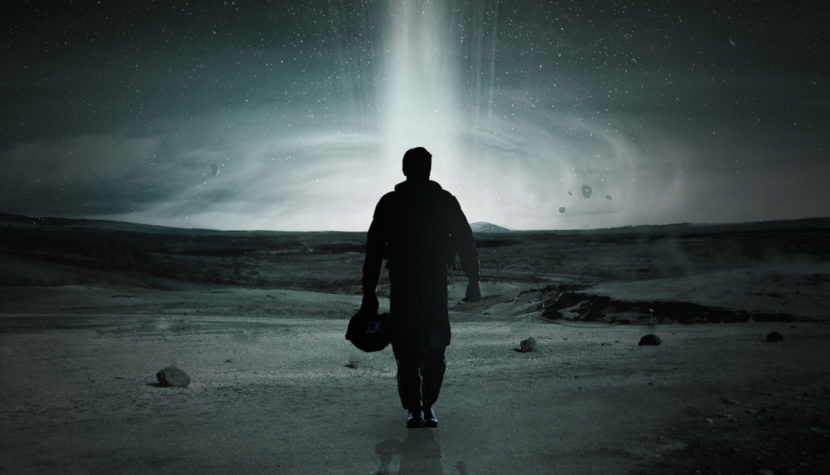
However, during the screening of Interstellar, something completely different intrigued me. Namely, a strong sense that the overblown story about saving the world is just a facade that hides something completely different, something very romantic, that it’s not science fiction, but a great treatise on love in its purest form.
Death
To the point. How about the fact that Christopher Nolan, with all the amazing trials that the main character goes through without difficulty, wanted to distract us from the cruel truth that Cooper died in the first minutes of the film?
“When?” – you will ask. “During a dream/flashback about the crash,” I’ll reply. In my opinion, this is a key scene for the whole story – because if it is not about Cooper’s death, why would it be in the film at all, and in addition as such an important opening sequence of the whole spectacle?

Let’s assume for the sake of my thesis that the worst happened at the very beginning of Interstellar – Cooper dies in a catastrophe here on Earth when his daughter Murph is twelve years old. At this point, most of you, readers, are probably already scrolling the page to the very end, to the comment section, to list one hundred and one examples that undermine my thesis. Yes, I know, you’re right, I can easily disprove it myself in a million ways. However, if you squint your eyes a bit and suspend disbelief for a moment, well, maybe on a slightly higher peg than usual, and want to look at Interstellar through the prism of Cooper’s death and join in my slightly naive “what if”, I invite you to read on.
Okay, since you’re still here, let’s move on. So Cooper only exists as a ghost for Murph, and everything that happens to him during the film (saving the world, doing an impossible docking, surviving an impossible encounter with a black hole, etc.) is just a fantasy/projection of Cooper’s mind that it flashes before his eyes at the moment of death or just after it, when Cooper is already an intangible being.
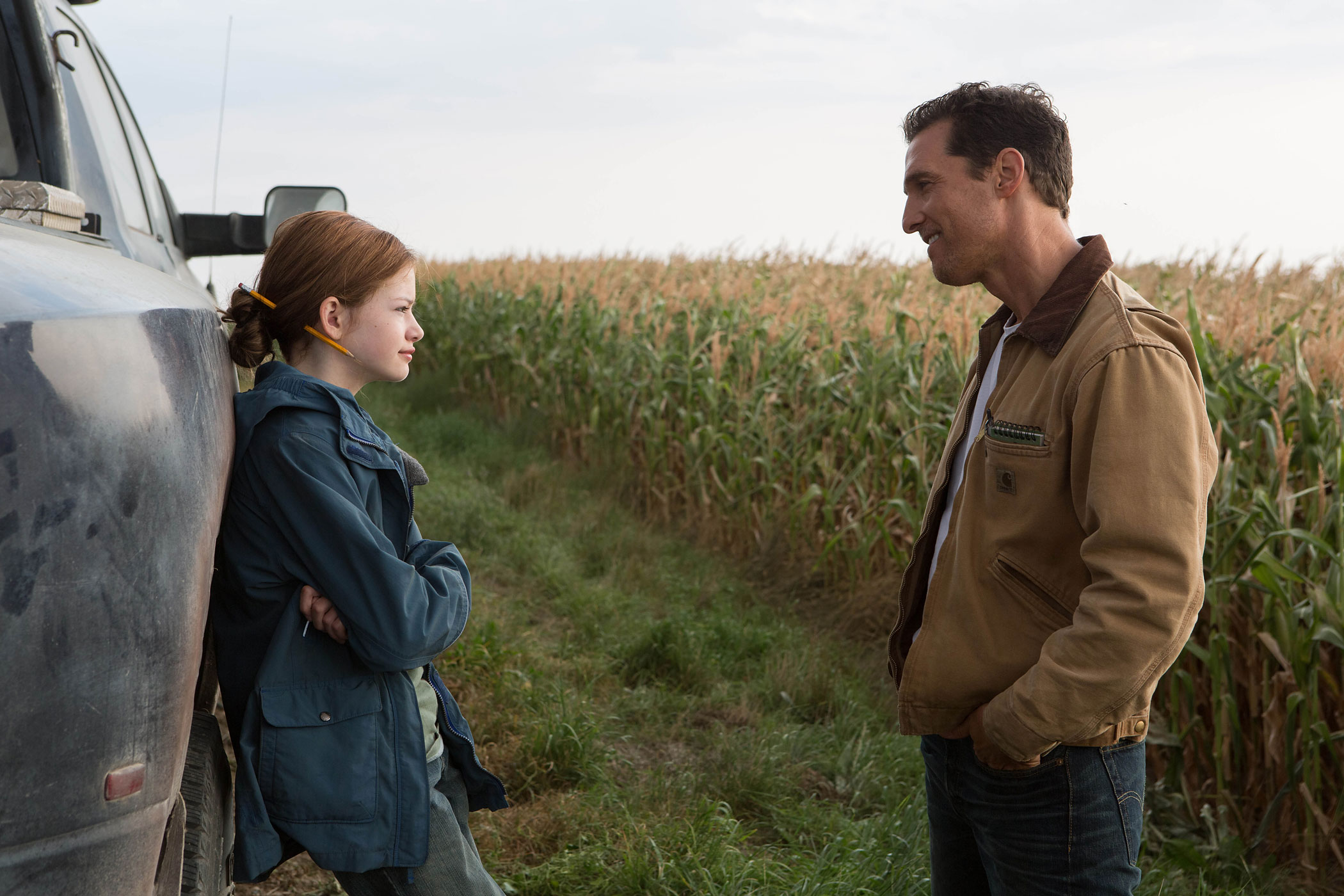
In this case, the most important and only reasonably real events in the entire film would be Cooper’s dream, in which the vehicle he pilots crashes, and the meeting with his dying daughter in the finale. The rest is a figment of his imagination, illustrating his unexpected breakup with Murph and his desperate attempts to reunite with her so he can say goodbye. Let’s pay attention to the scene where Cooper leaves without saying goodbye to his daughter. A normal, loving person – and Cooper was one of them – not knowing if he would ever return to Earth, would not leave without a word, would look for a girl, even if he had to turn the house and the whole world upside down, and not go ahead in tears. Cooper died suddenly, so he didn’t have a chance to say goodbye to his daughter – in the film, this is illustrated by the scene of his departure with tears in his eyes and Murph looking at the cloud of dust behind the departing car.
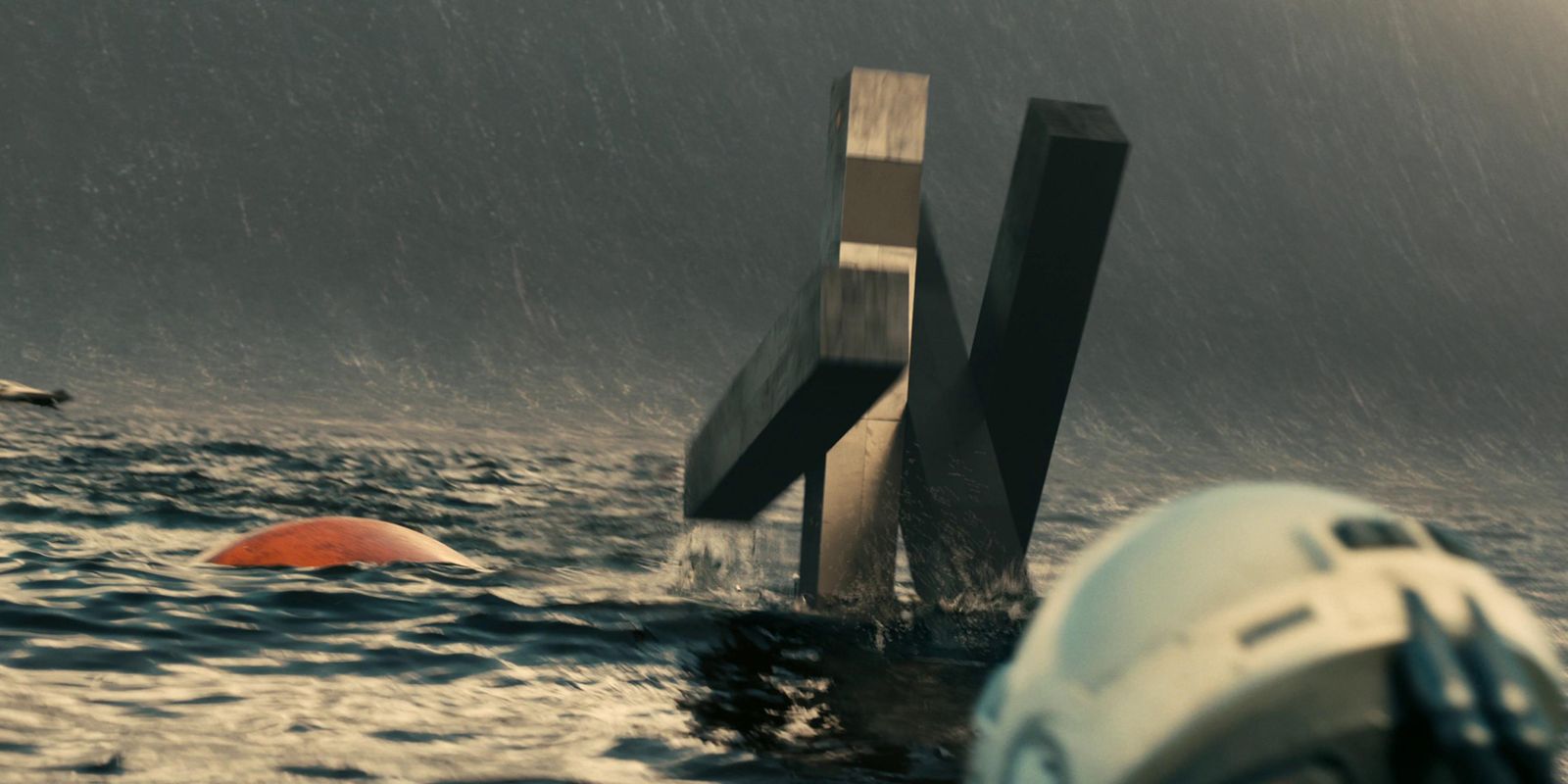
Related:
Afterlife
The fact that almost the entire plot of Interstellar takes place somewhere on the border of life and death, at the intersection of sleep and reality, is confirmed by a whole catalog of unreal, almost fairy-tale events.
Why is TARS, a large and clumsy military robot with a completely impractical design, a piece of sheet metal without legs and arms, even cheaper than Robby from The Lost Planet, suddenly turns out to be fast, agile and catching? Why was the impossible docking to the spinning station damaged in the explosion? Why did Cooper survive in a black hole? Why hadn’t Romilly, having spent thirty years in total solitude on the ship waiting for his comrades to return, not go mad and start running around the deck with an axe, but politely wait to greet his comrades as if they had returned from a bar around the corner instead of thirty years away? All these spectacular and unrealistic things, even in the very far-fetched SF cinema, may have happened only in Cooper’s imagination, during his spiritual journey towards meeting his daughter. In this case, the black hole is nothing but nothingness symbolizing death, and the fact of Cooper’s survival in it is a symbolic triumph over death, defeated by the power of love. The interior of the black hole, from which Cooper observes the past, is nothing more than a film from his whole life flashing before the eyes of a dying man in a split second, which supposedly will be shown to each of us one day in a cinema room with a place for one viewer. However, the power of Cooper’s love for his daughter is so great that instead of passively observing the scenes from life shown to him, which have already happened and nothing can be changed in them, he establishes contact with Murph, eventually overcoming the limitations of time and space, the border between life and death.

And yes, Nolan talks ambitiously and very intelligently about traveling to other worlds. But, although it seems that it is a trip into space, in reality we are dealing with a journey without returning to the “other world”, which we have been hearing about since childhood and which we will all go to someday. Maybe then we will also be able to jump at will throughout the universe at any time. An additional element in favor of the interpretation of the film I propose is the organ music illustrating most of the events, after all strictly assigned to the institution of the church, and in the church, as in the church, funerals are held, among others. Cooper, buried long ago on Earth, after many years of trying and looking for contact with his daughter, manages to return from the “other world” to meet the dying Murph for a moment.
Interstellar, itself a brilliant sci-fi movie, takes on unimaginable depth when viewed through the lens of Cooper’s death. Treating Nolan’s film in this way gave me a spiritual experience of the same magnitude as watching Blade Runner through the prism of Deckard’s unicorn dream.
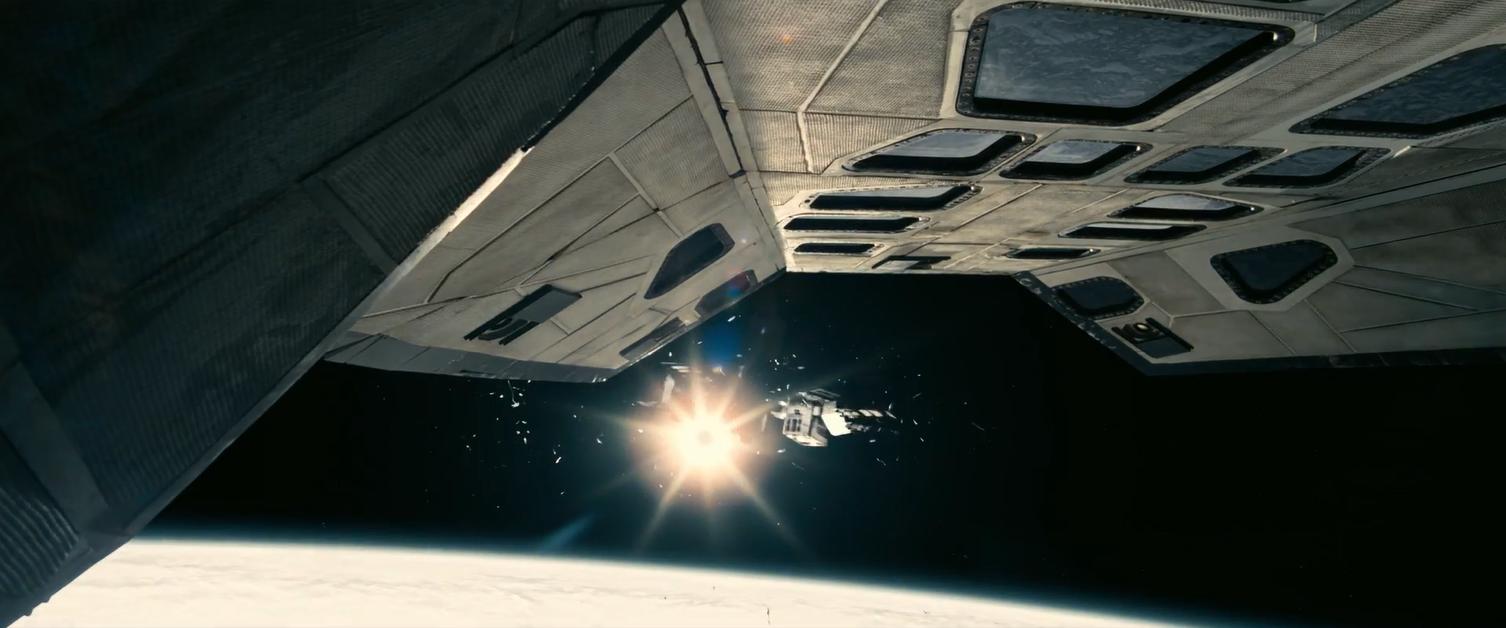
DEAD ON ARRIVAL
– What do we see at the moment of death?
– Own children.
There are plenty of clues in the film that support and validate my assumptions about Cooper’s death at the beginning of the film. For example, the fact that (see dialogue quoted two lines above) the first person Cooper sees after waking up from a dream about a plane crash is his child, Murph. The space station that Cooper ends up in in the film’s finale is, in turn, an image of paradise stylized to resemble his earthly home, a place known and safe, full of good memories. In addition, paradise is named in memory of his daughter who saved the Earth; about himself (and it’s supposedly Cooper who did a lot of hard, cosmic work, right?) there is no mention. Logical, because being dead from the beginning of the movie, he could not take part in saving the world. Only the doctor tells Cooper that his daughter always emphasized his contribution to saving the world, but – you know – she could do it on the basis of an Oscar-winning “I would like to thank the Academy and my father, without whom I would not have achieved what I have achieved.” Another clue is the name of the mission to search for planets outside our solar system – “Lazarus” – the non-randomness of which was emphasized by a short dialogue between Professor Brand and Cooper:
– Lazarus is back from the dead.
– Yes, but he had to die first.

We go further. You get an extremely rare, less than one in a billion chance to intercept an Indian drone whose solar cells will help power your farm. Better to be very careful not to crash it on landing, right? You are a military pilot, so you know avionics and you can control such machines … so you hand over the controls to your twelve-year-old daughter, who with one shuffle on the pad brings the drone safely to the ground – such things only in fairy tales or in the imagination of a dying father who, for the happiness of his beloved Murph will do and risk literally anything.
Cooper is dead and is watching his daughter from the afterlife...
Cooper’s daughter is the brains behind this whole save-the-world operation, but even though she’s grown up and sitting at the table with the NASA bigwigs, Cooper still sees her as a girl – like a father who will always see her as his little girl. What then, if there’s no Cooper space mission, it’s all about saving the world by his daughter? Perhaps it’s her actual help from the space organization in finding a way to leave the planet, or maybe it’s saving her own microworld that collapsed after the death of her father. Her longing for Cooper, with whom she had no opportunity to say goodbye, and her desperate attempts to make contact with the ghost – in the finale of the film, on her deathbed, are crowned with success. It was only when Murph’s life was coming to an end that two souls separated years ago could meet. Cooper still looks young as he did when he died, while Murph is old.

It is also puzzling that the plane from the prologue of the film, in which Cooper had an accident, and in reality (the one created for the purpose of this article) lost his life, from the outside looks exactly the same as the vehicle in which the hero later performs a mission in deep space. In addition, in the dream scene, he is wearing a classic aviator mask. My question is, is the same equipment used here on Earth and millions of light years to other galaxies? Another proof that everything is happening in the mind of the dying Cooper, where neither time and space nor rationality and consistency exist anymore. The entire spectacular journey of the heroes in search of the New World appears therefore as a projection of Cooper’s mind, which at the moment of death moves to the “other world”. Have you ever closed your eyes so hard that “stars” appeared, and you began to move faster and faster towards them, as if you were jumping into hyperspace? Exactly.
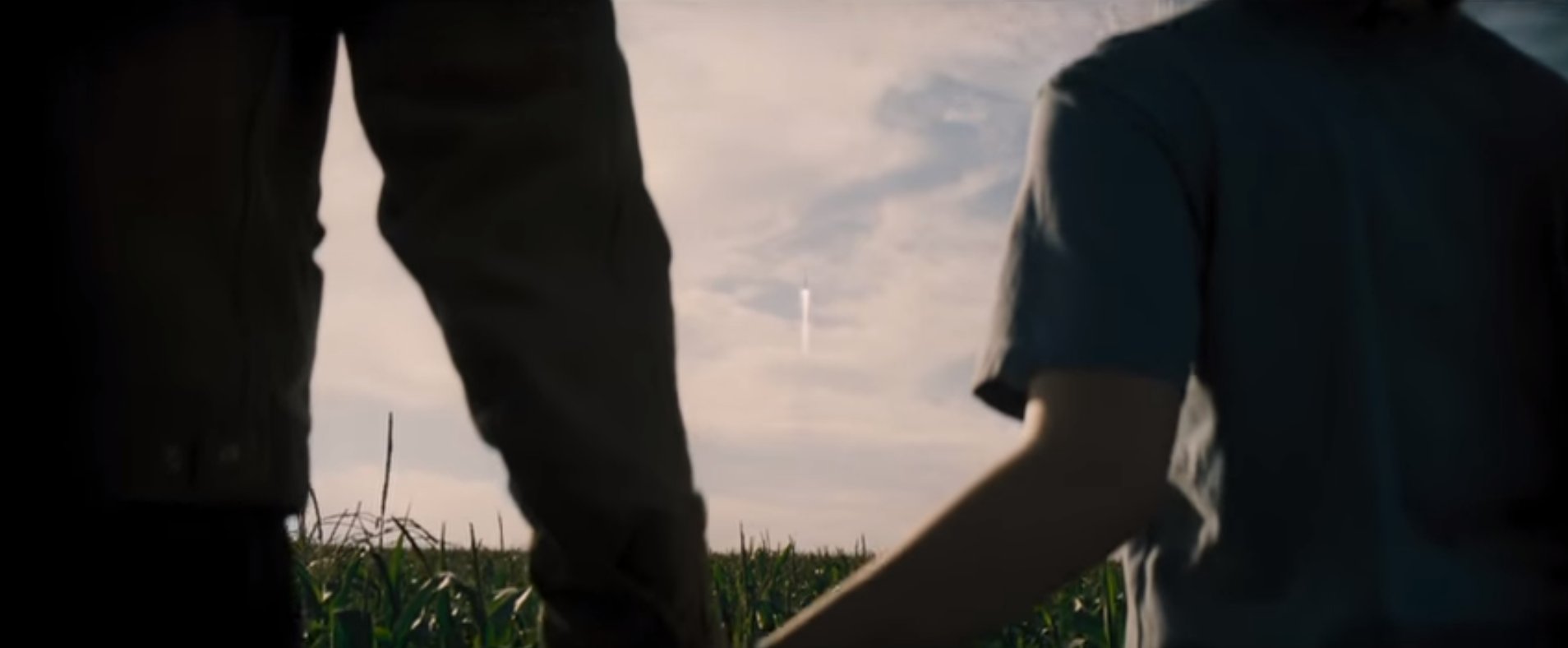
If you recall one of the Interstellar trailers, there was a scene in which Murph, holding hands with his brother, watches a ship taking off from Earth with her father on board. That scene didn’t make it into the finished movie because Murph could never see it – there was no spaceship, no mission, no save the world – at least in the form we’ve seen it up until now.
The END OF THE WORLD
Hence all the understatements and the lack of a broader description of the presented world. An undefined factor leads the Earth and people to destruction, crops are destroyed, and the ubiquitous sand penetrates into all nooks and crannies. As Professor Brand says, the world will end with the Murph generation, but in fact we are talking about Cooper’s world, for whom Murph was the whole world and with her death everything will end, it will be the end of (his) world. It is because of his love for his daughter that Cooper’s soul cannot find peace, tormented by remorse for leaving without saying goodbye. It is out of unresolved grief and loss that Cooper, suspended between the worlds of the living and the dead, tries to make contact with Murph. It is this quantification of love that Brand is talking about.
– We love people who have died. Maybe it means something more.
– Something we don’t understand yet…
What about sand? Why sand, earth, dust? Maybe I’m exaggerating here, but the ubiquitous sand that also penetrates into the supposedly safe place – the inside of the house, sand unambiguously associated with something unpleasant, because with an uncontrollable destructive force, symbolizes Cooper’s funeral, a coffin covered with earth, from which a symbolic attempt is made to get out to finish the unfinished, to say goodbye to my daughter.
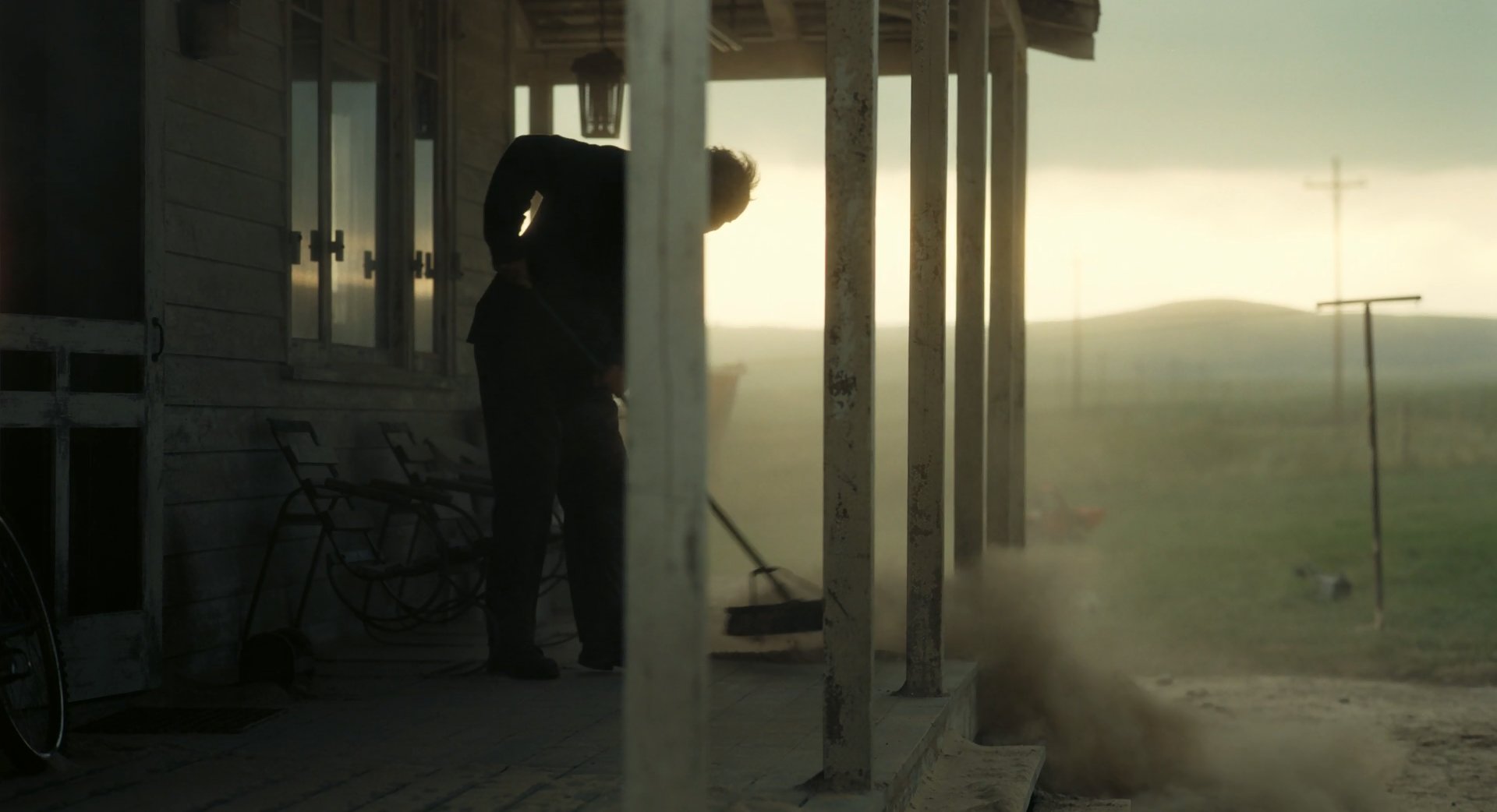
A NEW BEGINNING
When Cooper wakes up from a nightmare (this is the moment when he begins to function as the soul of the deceased looking for solace), his daughter, entering his bedroom, tells him that she took him for a ghost, and this key phrase makes Nolan’s film an extremely interesting, if completely unobvious variation About Shyamalan’s Sixth Sense. Cooper, when he meets his daughter at her deathbed, speaks to no one else but her, although his grandchildren and great-grandchildren are also in the room. But neither he nor they are completely interested in him, strange, right? Application? Only the daughter sees Cooper and only she talks to him, because she herself is dying and starting to “broadcast on the same wavelength” as the father’s ghost. There was no quest, no saving the world, just the dead Cooper’s attempts to make contact with his orphaned daughter and vice versa. Boundless love overcame space, and Cooper crossed the oceans of time mentioned in Coppola’s Dracula and overcame all the trials, presented by Nolan in a spectacular, attractive way. Cooper finds himself in a paradise shown here in the form of a space station. However, despite the idyllic atmosphere and a sense of security, he does not want to be here and sets off on a further journey in search of a new love, a new meaning of (non)existence.
“I love you. I will love you until the day I die.
And if there’s a life after that, then I’ll love you too.”
Cassandra Clare – City of Glass





